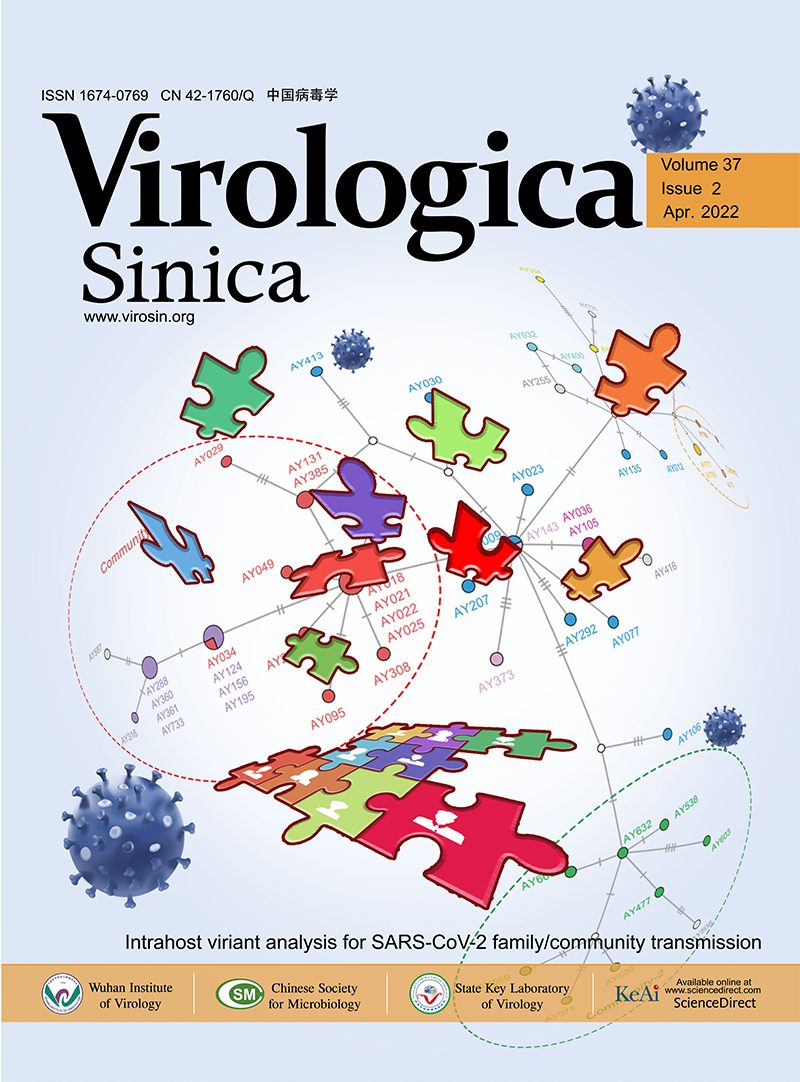-
Baechlein, C., Baron, A.L., Meyer, D., Gorriz-Martin, L., Pfankuche, V.M., Baumgartner, W., Polywka, S., Peine, S., Fischer, N., Rehage, J., Becher, P., 2019. Further characterization of bovine hepacivirus:antibody response, course of infection, and host tropism. Transbound Emerg Dis 66, 195-206.
-
Baechlein, C., Fischer, N., Grundhoff, A., Alawi, M., Indenbirken, D., Postel, A., Baron, A.L., Offinger, J., Becker, K., Beineke, A., Rehage, J., Becher, P., 2015. Identification of a novel hepacivirus in domestic cattle from Germany. J. Virol. 89, 7007-7015.
-
Billerbeck, E., Wolfisberg, R., Fahnoe, U., Xiao, J.W., Quirk, C., Luna, J.M., Cullen, J.M., Hartlage, A.S., Chiriboga, L., Ghoshal, K., Lipkin, W.I., Bukh, J., Scheel, T.K.H., Kapoor, A., Rice, C.M., 2017. Mouse models of acute and chronic hepacivirus infection. Science 357, 204-208.
-
Burbelo, P.D., Dubovi, E.J., Simmonds, P., Medina, J.L., Henriquez, J.A., Mishra, N., Wagner, J., Tokarz, R., Cullen, J.M., Iadarola, M.J., Rice, C.M., Lipkin, W.I., Kapoor, A., 2012. Serology-enabled discovery of genetically diverse hepaciviruses in a new host. J. Virol. 86, 6171-6178.
-
Canal, C.W., Weber, M.N., Cibulski, S.P., Silva, M.S., Puhl, D.E., Stalder, H., Peterhans, E., 2017. A novel genetic group of bovine hepacivirus in archival serum samples from Brazilian cattle. BioMed Res. Int., 4732520, 2017.
-
Corman, V.M., Grundhoff, A., Baechlein, C., Fischer, N., Gmyl, A., Wollny, R., Dei, D., Ritz, D., Binger, T., Adankwah, E., Marfo, K.S., Annison, L., Annan, A., AduSarkodie, Y., Oppong, S., Becher, P., Drosten, C., Drexler, J.F., 2015. Highly divergent hepaciviruses from African cattle. J. Virol. 89, 5876-5882.
-
da Silva, M.S., Junqueira, D.M., Baumbach, L.F., Cibulski, S.P., Mosena, A.C.S., Weber, M.N., Silveira, S., de Moraes, G.M., Maia, R.D., Coimbra, V.C.S., Canal, C.W., 2018. Comprehensive evolutionary and phylogenetic analysis of Hepacivirus N (HNV). J. Gen. Virol. 99, 890-896.
-
Deng, Y., Guan, S.H., Wang, S., Hao, G., Rasmussen, T.B., 2018. The detection and phylogenetic analysis of bovine hepacivirus in China. BioMed Res. Int., 6216853, 2018.
-
Drexler, J.F., Corman, V.M., Muller, M.A., Lukashev, A.N., Gmyl, A., Coutard, B., Adam, A., Ritz, D., Leijten, L.M., van Riel, D., Kallies, R., Klose, S.M., GlozaRausch, F., Binger, T., Annan, A., Adu-Sarkodie, Y., Oppong, S., Bourgarel, M., Rupp, D., Hoffmann, B., Schlegel, M., Kummerer, B.M., Kruger, D.H., SchmidtChanasit, J., Setien, A.A., Cottontail, V.M., Hemachudha, T., Wacharapluesadee, S., Osterrieder, K., Bartenschlager, R., Matthee, S., Beer, M., Kuiken, T., Reusken, C., Leroy, E.M., Ulrich, R.G., Drosten, C., 2013. Evidence for novel hepaciviruses in rodents. PLoS Pathog. 9, e1003438.
-
Elia, G., Caringella, F., Lanave, G., Martella, V., Losurdo, M., Tittarelli, M., Colitti, B., Decaro, N., Buonavoglia, C., 2020. Genetic heterogeneity of bovine hepacivirus in Italy. Transbound Emerg Dis 67, 2731-2740.
-
Kapoor, A., Simmonds, P., Gerold, G., Qaisar, N., Jain, K., Henriquez, J.A., Firth, C., Hirschberg, D.L., Rice, C.M., Shields, S., Lipkin, W.I., 2011. Characterization of a canine homolog of hepatitis C virus. Proc. Natl. Acad. Sci. U. S. A. 108, 11608-11613.
-
Lauck, M., Sibley, S.D., Lara, J., Purdy, M.A., Khudyakov, Y., Hyeroba, D., Tumukunde, A., Weny, G., Switzer, W.M., Chapman, C.A., Hughes, A.L., Friedrich, T.C., O'Connor, D.H., Goldberg, T.L., 2013. A novel hepacivirus with an unusually long and intrinsically disordered NS5A protein in a wild Old World primate. J. Virol. 87, 8971-8981.
-
Lu, G., Jia, K., Ping, X., Huang, J., Luo, A., Wu, P., Li, S., 2018. Novel bovine hepacivirus in dairy cattle, China. Emerg. Microb. Infect. 7, 54.
-
Lu, G., Ou, J., Zhao, J., Li, S., 2019. Presence of a novel subtype of bovine hepacivirus in China and expanded classification of bovine hepacivirus strains worldwide into 7 subtypes. Viruses 11, 843.
-
Mauroy, A., Guyot, H., De Clercq, K., Cassart, D., Thiry, E., Saegerman, C., 2008. Bluetongue in captive yaks. Emerg. Infect. Dis. 14, 675-676.
-
Quan, P.L., Firth, C., Conte, J.M., Williams, S.H., Zambrana-Torrelio, C.M., Anthony, S.J., Ellison, J.A., Gilbert, A.T., Kuzmin, I.V., Niezgoda, M., Osinubi, M.O., Recuenco, S., Markotter, W., Breiman, R.F., Kalemba, L., Malekani, J., Lindblade, K.A., Rostal, M.K., Ojeda-Flores, R., Suzan, G., Davis, L.B., Blau, D.M., Ogunkoya, A.B., Alvarez Castillo, D.A., Moran, D., Ngam, S., Akaibe, D., Agwanda, B., Briese, T., Epstein, J.H., Daszak, P., Rupprecht, C.E., Holmes, E.C., Lipkin, W.I., 2013. Bats are a major natural reservoir for hepaciviruses and pegiviruses. Proc. Natl. Acad. Sci. U. S. A. 110, 8194-8199.
-
Ramsay, J.D., Evanoff, R., Wilkinson Jr., T.E., Divers, T.J., Knowles, D.P., Mealey, R.H., 2015. Experimental transmission of equine hepacivirus in horses as a model for hepatitis C virus. Hepatology 61, 1533-1546.
-
Sadeghi, M., Kapusinszky, B., Yugo, D.M., Phan, T.G., Deng, X., Kanevsky, I., Opriessnig, T., Woolums, A.R., Hurley, D.J., Meng, X.J., Delwart, E., 2017. Virome of US bovine calf serum. Biologicals 46, 64-67.
-
Shi, M., Lin, X.D., Vasilakis, N., Tian, J.H., Li, C.X., Chen, L.J., Eastwood, G., Diao, X.N., Chen, M.H., Chen, X., Qin, X.C., Widen, S.G., Wood, T.G., Tesh, R.B., Xu, J., Holmes, E.C., Zhang, Y.Z., 2016. Divergent viruses discovered in arthropods and vertebrates revise the evolutionary history of the flaviviridae and related viruses. J. Virol. 90, 659-669.
-
Smith, D.B., Becher, P., Bukh, J., Gould, E.A., Meyers, G., Monath, T., Muerhoff, A.S., Pletnev, A., Rico-Hesse, R., Stapleton, J.T., Simmonds, P., 2016. Proposed update to the taxonomy of the genera Hepacivirus and Pegivirus within the Flaviviridae family. J. Gen. Virol. 97, 2894-2907.
-
Xu, F., Pan, Y., Baloch, A.R., Tian, L., Wang, M., Na, W., Ding, L., Zeng, Q., 2014. Hepatitis E virus genotype 4 in yak, northwestern China. Emerg. Infect. Dis. 20, 2182-2184.
-
Yesilbag, K., Baechlein, C., Kadiroglu, B., Baldan Toker, E., Alpay, G., Becher, P., 2018. Presence of bovine hepacivirus in Turkish cattle. Vet. Microbiol. 225, 1-5.
















 DownLoad:
DownLoad: